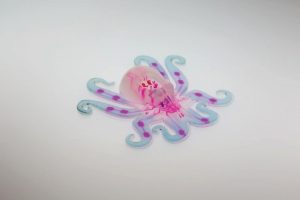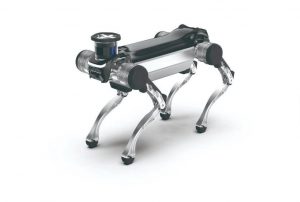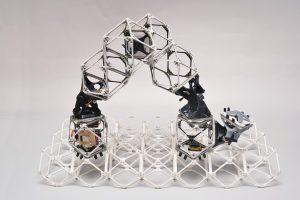[ad_1]
Protolabs has just published an engineering guide to understand what the future of robotics will be. It presents recent advances in materials, the latest hardware innovations, robotic manufacturing processes and offers a particularly varied range of robotic applications. Here is a quick presentation of some of the themes covered in the document.
This report, written by different contributors[1] and sponsored by Protolabs “aims to provide an overview of the latest developments and status of basic robotics technologies. »
New materials for soft robotics
While traditional robotics relies on mechatronic systems and rigid materials, soft robotics is distinguished by the use of intelligent and versatile materials, capable of integrating different functions.
Because they are deformable and flexible, elastomers[2] are therefore perfect candidates when it comes to designing robots capable of moving in cramped spaces, or of developing flexible grippers for handling fragile objects. Furthermore, elastomers also have good “ability to distribute impact loads more efficiently across the entire body of the robot. »

Intelligent materials combining detection, activation and structural objectives have also evolved significantly in recent years. In this new class of materials, we can notably cite electromechanically active polymers (EAP), better known as artificial muscles and which deform under the effect of an electric field. Other materials, reacting to various stimuli such as temperature, pH or light, as well as shape memory polymers are also the subject of much research.
Technological advances at all levels
The report also provides an overview of the technological and methodological advances that enable industrial robotics to become one of the drivers of innovation.
Material aspect:
- the sensors
- CPUs
- control systems
- motors and actuators
- terminal effectors
- the connectors
- power sources
Concerning digital manufacturing processes:
- cyber-physical production systems (CPPS)
- Manufacturing as a Service (MaaS)
- fabrication additive
- CNC machining
- injection molding
- manufacturability analysis (DFM)
- iterative design method
Sometimes surprising robotic projects
To illustrate its report, Protolabs also selected a multitude of projects, from companies and university research laboratories, which show how varied robotic applications are.
- The sensitive robotic arm Franka Emikas Panda
Interconnected and adaptive, this lightweight robotic arm is designed to help humans safely. It differs from other cobots by its method of programming and training by learning and using the stimulation of artificial 3D environments.
Its very sophisticated manipulator is also equipped with a force sensor control system. Torque control allows humans to safely perform tasks that require direct physical contact.
- Bionic and bioinspired robots
In 2009, the company Boston Dynamics caused a sensation with its quadruped robot prototype. In almost 15 years, bioinspired robots have continued to evolve.
Designed for rescue operations, the Jueying X20 quadruped robot from DEEP Robotics is capable of moving through ruins, stairwells and in all types of high-risk environments. Unlike a real dog, it uses thermal imaging to identify humans and other living species in the environment where it is deployed!

Even more surprising, the company is currently working on multi-robot operation which would allow several units to work together and completely autonomously on a single task.
DEEP Robotics is not the only company wanting to have several robots work cooperatively. By combining additive manufacturing technologies and plastronics, robotics company Festo has created a robotic swarm called BionicANTs. Beyond the issues linked to its manufacturing, this swarm of ant robots makes it possible to demonstrate “how individual units can react independently to different situations, coordinate their actions with each other and act as an overall interconnected system. »

Difficult to be exhaustive, because the guide contains many other examples of applications: humanoid robot, agricultural robotics, robot intended for medical care, voxel assembly robotetc.
If you would like more details, we invite you to view the full reportdownloadable from the Protolabs website.
[1] Per Sjöborg, Laura Tripaldi, Lydia Husser, Shreyasta Samal, John Soldatos
[2] Natural and synthetic rubber, silicones such as polydimethylsiloxane (PDMS), soft composites, etc.
[ad_2]
Source link